
Error Guide
Part Four
Split Die
Split die obverse with the obverse split in half and with a separation in the die. Reverse is normal.
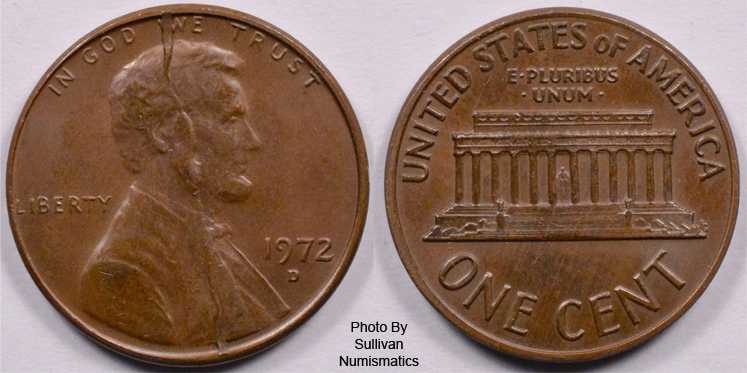

Die Adjustment Strike
About 60% of the design missing due to the coin having been struck with insufficient striking pressure. Notice how the rims are not formed, something that would show if this were a filled die error.
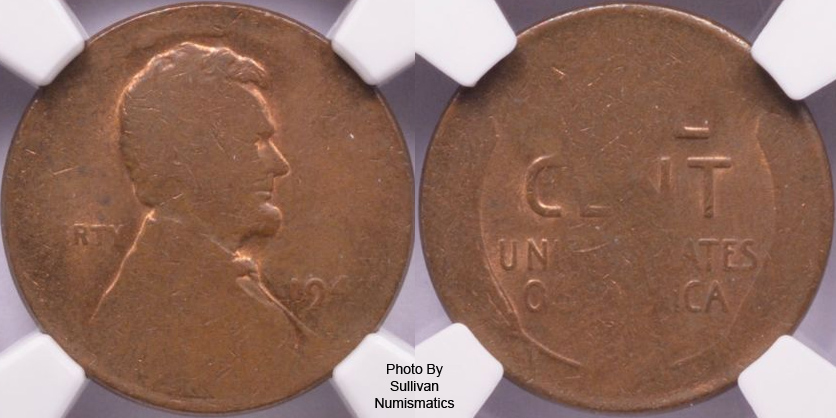
1959-D Lincoln Cent Obverse Lamination & Separated Fragments
This coin has a laminated obverse with the small piece of the obverse having split off after strike.
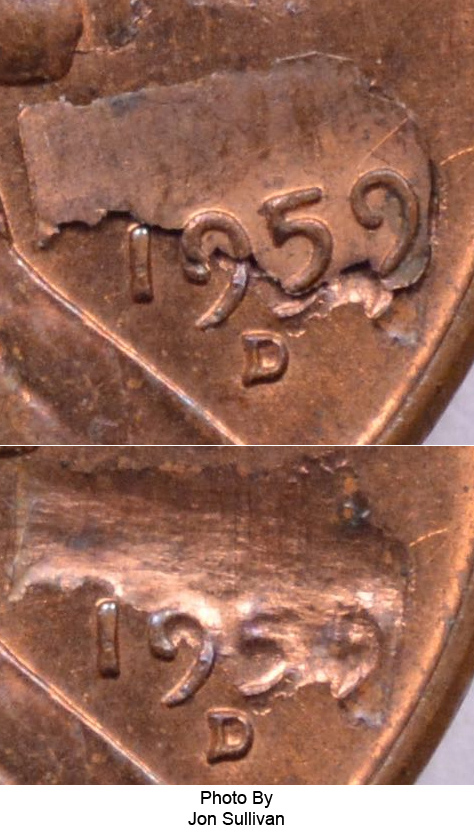
Enigmatic die issues
Sometimes we find something on a coin that eludes explaination. Since the anomaly can be found on several coins from the same year and mint, it is obviously a die issue, but the cause can be difficult to explain.
A good example of this can be found on the reverse side of the 1973-D Lincoln cent. For an unknown reason, several reverse dies from the 1973-D cent show a raised area in a similar location. The raised area can change in size and shape from die to die, but is always found in the same location. It is found on the left side, and in the second and third bays of the Memorial building.
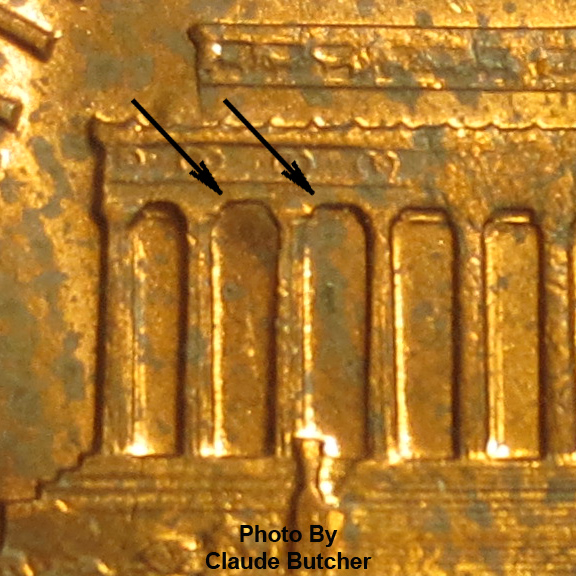
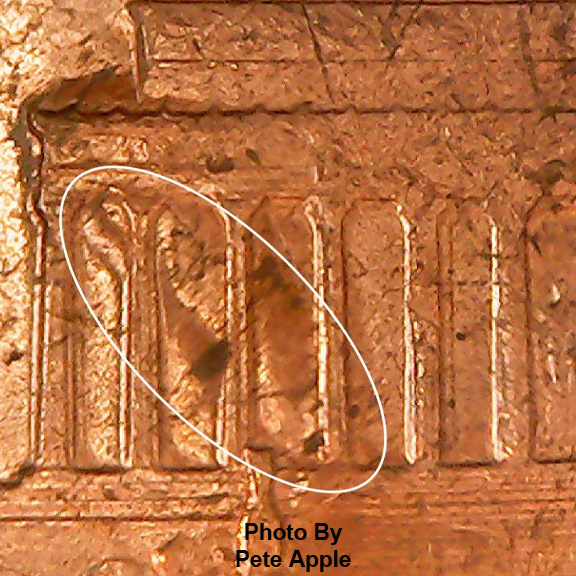
This raised area is often confused with a die clash, and it does resemble one and even closely lines up with where a clash would be, but there are no other signs of a clash anywhere on the coins. Some error experts believe this may be a recurring die subsidence error, possibly caused from a defect in the metal stock used to make the dies.
Tapered Planchet
1958 Wheat Cent Tapered Planchet 2.26 Grams
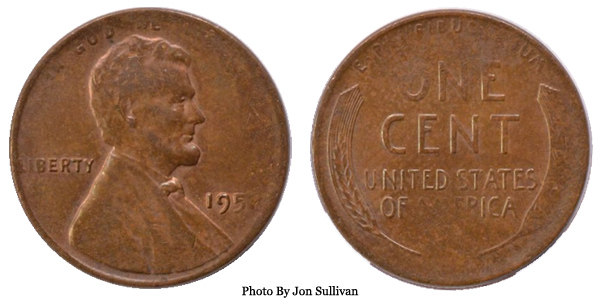
Double Struck
If a cent fails to completely eject from the striking chamber after it is struck, the dies will strike the coin again. Depending on how far out of the chamber the cent is when it gets struck again, the second strike can be off center a little bit or just catch the edge of the coin.

Lincoln Cent Full Brockage Obverse
The die cap rotated before it struck this coin.
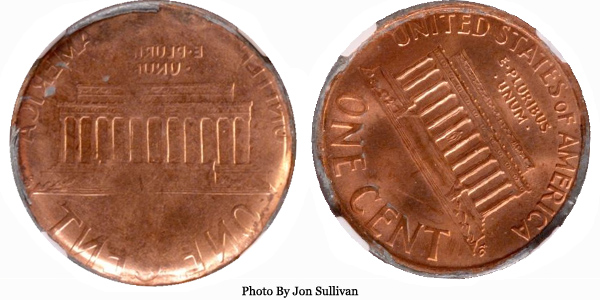
Incomplete Punch - Incomplete Clip
An incomplete clip is a rare planchet error that occurs during the blanking process. It happens when the blanking punch fails to punch all the way through the metal stock. If the stock doesn't move forward far enough, and the punch strikes the same area again, it will show the mark from the first failed punch on both sides of the blank.
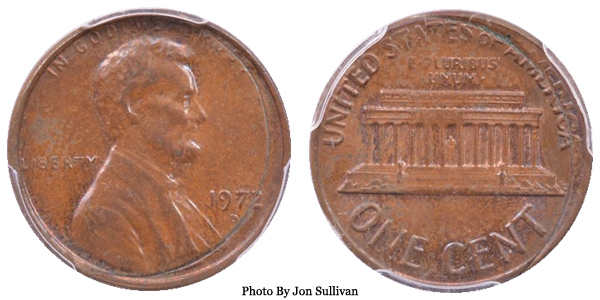
Lamination Error
To see more lamination errors click here
Peeling of any part of the surface of a planchet causes what is know as a lamination error. The laminated part of the coin may be very small or run completely across the surface of the coin. Sometimes, the laminated layer will fall away and be completely missing, other times it can be folded back across the surface of the coin.
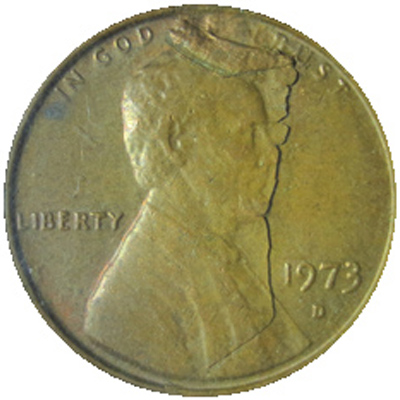
Photo by Lincoln Cents Online
1971-D
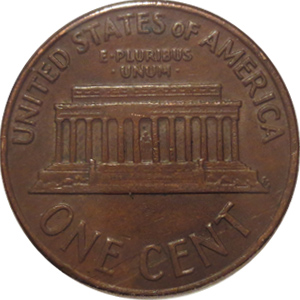
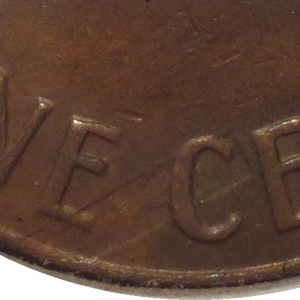
Photos by Lincoln Cents Online
1913
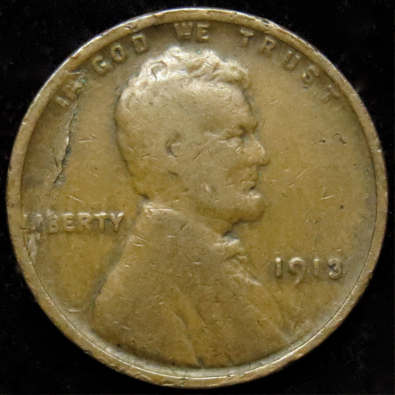
Photo by Lincoln Cents Online